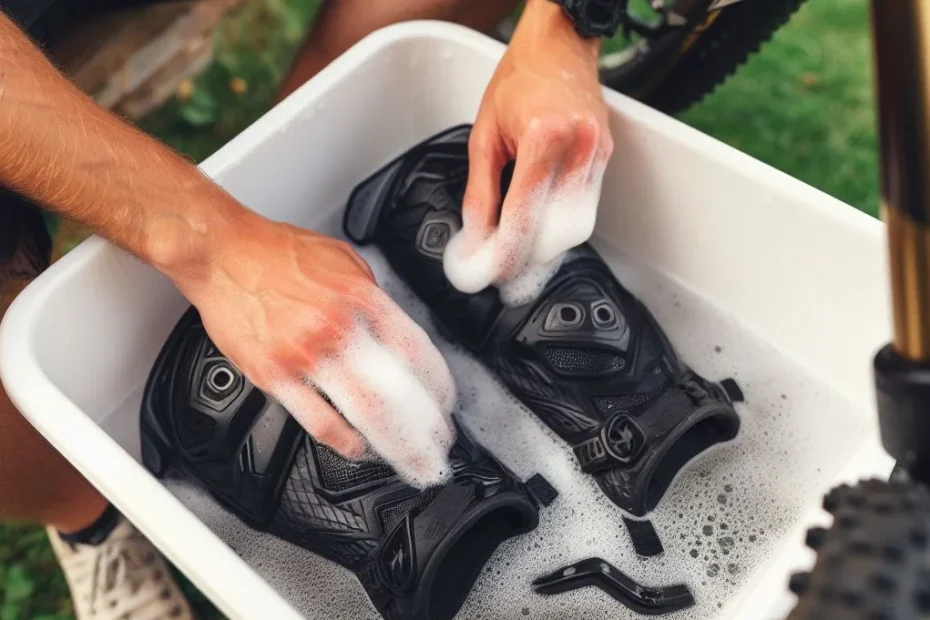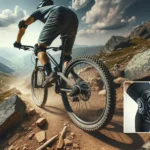Mountain biking elbow pads are an important piece of protective gear for riders. Taking proper care of your elbow pads will help ensure they provide the best protection when you need it most out on the trails. This article provides tips on cleaning, storage, inspection, and general maintenance of MTB elbow pads.
Introduction
Mountain bike elbow pads protect one of the most vulnerable parts of a rider’s body – the elbows. The pads cushion impacts and prevent scrapes if you take a spill onto the rugged terrain. As a rider, you’ve likely geared up with elbow pads to guard yourself on the trail. But those pads need some TLC too in order to keep working effectively season after season. Basic maintenance like washing pads regularly, checking for damage, and storing them properly goes a long way. Read on to learn the key things you need to do to care for your MTB elbow pads.
Cleaning Elbow Pads
One of the most important maintenance tasks for elbow pads is regular cleaning. Pads see a lot of dirt, sweat, and mud out on the trail. Leaving all that residue on the pads can degrade materials over time. It’s best to clean pads after every few rides to remove grime.
Start by removing any loose debris from the pads by brushing them off gently. Then hand wash using warm water and a small amount of mild detergent. Gently scrub the pad surfaces with a soft brush or sponge. Rinse thoroughly afterwards with clean water to remove all soap.
Be sure to follow any special washing instructions from the pad manufacturer such as avoiding certain cleaners. Never put elbow pads in the washing machine or dryer as high heat can damage materials. Hang pads to fully air dry before storing or wearing again.
Inspecting for Damage
In addition to cleaning, you should periodically inspect your MTB elbow pads for any damage. Small rips, tears, or worn sections can compromise protection. It’s easy to miss damage when pads are dirty, so examine them after washing.
First check all stitching on the pads looking for any loose threads or small holes. Examine the main pad body, straps, and fasteners for tears in the fabric or padding. Look to see the padding still appears intact without large indentations or flat spots. Check any hard shell plastic caps haven’t cracked or started peeling off.
If you notice any excessive damage, it’s time to replace your elbow pads with a new set. Continuing to wear pads with damage greatly reduces shock absorption during a crash. Stay safe on the trails by swapping out any elbow pads past their prime.
Storage Tips
Proper storage between rides helps maintain your MTB elbow pads too. The way you store pads when not in use protects materials from additional wear or accidental damage at home.
After pads are clean and dry, store them in a cool, dry place out of direct sunlight. Heat and UV light can slowly break down fabrics and padding over time. Stash pads in a closet or bin for the best protection when not riding.
Before storage, lightly stuff pads with a towel or t-shirt to help retain their original shape too. Avoid crushing or deforming pads when putting other gear on top of them. Also store pads away from any sharp yard tools or equipment that could poke additional holes. Following these storage guidelines ensures pads stay in riding shape for seasons to come.
Consider Replacement Pads
With regular cleaning, inspection, and proper storage, quality MTB elbow pads can last for many years. But no gear lasts forever when exposed to dirt, weather, and hard crashes season after season.
As pads wear out, their ability to protect your elbows diminishes substantially. Worn padding feels much less shock absorbent during impacts. If your current elbow pads feel stiff or flattened out, it’s probably time for an upgrade.
Advancements in pad technology and materials happen frequently as well. Upgrading older pads to new models designed for your riding type helps take advantage of the latest protective innovations. And new pads of course offer full shock absorbing capacity too.
As pads wear out and get replaced over time, make sure to dispose of used pairs properly too. Most pads utilize recyclable materials like fabric, foam, and plastic. Check if your local facility accepts sports safety gear for recycling.
Getting the Right Fit
One quick final tip for keeping elbow pads in good shape over their lifespan – make sure yours are fitting properly to begin with. Pads worn too loose or too tight both lead to accelerated wear and suboptimal protection.
Take the time to check your pads offer a comfortable compression fit without excess movement around your elbow joint. Straps and velcro closures make adjustment easy if the initial fit doesn’t seem right. Refer to pad sizing measurement guides to select your ideal size as well.
Dialing in the proper compression fit based on your arm dimensions means pads stay firmly in place during crashes. Pads shouldn’t slide around leading to irritation or skin injuries unrelated to impacts. Well-fitted elbow pads ultimately lead to better safety, comfort, and component longevity as you log miles on the trails.
Conclusion
Elbow pads are vital protective MTB gear, but they require some care and maintenance on your part as well. By regularly washing away dirt and grime, inspecting components for damage, using proper storage methods, and replacing worn pads – you’ll keep your elbows reliably guarded from trail hazards and debris.
Paying attention to your pads means you can worry less about injuries during rides. Always pre-ride check that your elbow pads appear in serviceable condition before hitting the trails as well. Protecting yourself with well-maintained pads for safety and injury prevention gives the confidence to try new terrain and features during every exhilarating ride.






